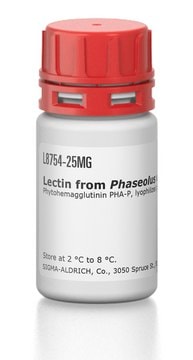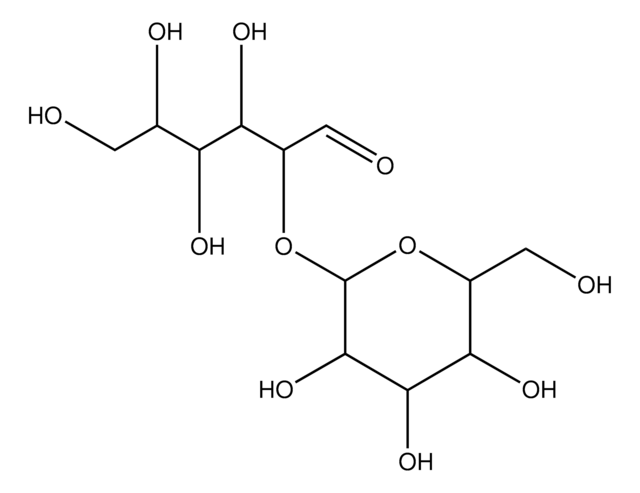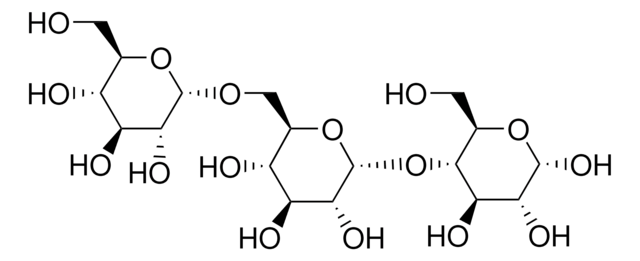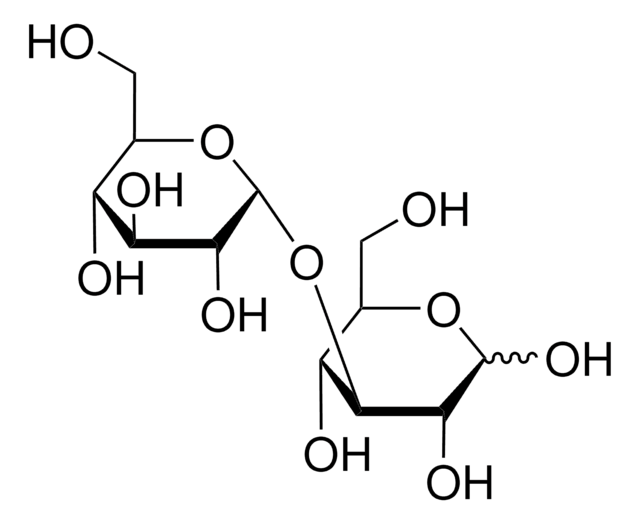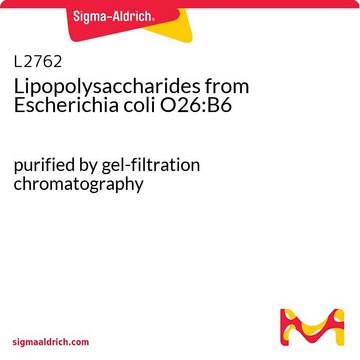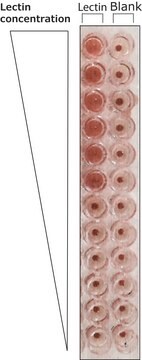L8777
Lectin from Phytolacca americana (pokeweed)
lyophilized powder, BioReagent, suitable for cell culture
Synonym(s):
PWM, Pokeweed mitogen
Sign Into View Organizational & Contract Pricing
All Photos(1)
About This Item
Recommended Products
sterility
aseptically filled
Quality Level
product line
BioReagent
form
lyophilized powder
potency
≤0.3 μg/mL mitogenic activity
technique(s)
cell culture | mammalian: suitable
solubility
PBS: 1 mg/mL
storage temp.
2-8°C
Looking for similar products? Visit Product Comparison Guide
Related Categories
General description
Lectins are proteins of plant origin, which have the ability to bind to certain neuronal surface glycoproteins and glycolipids. This ability of theirs helps them to be used as neuroanatomical tracers, as they are taken and transported in a retrograde or anterograde fashion.
Application
Lectin from Phytolacca americana (pokeweed) is used for proliferation Assay. (Cellular proliferative responses were measured by the incorporation of 3H thymidine in newly synthesized DNA, using a conventional assay).
Biochem/physiol Actions
Lectins are carbohydrate-binding proteins and are highly specific for sugar moieties. Pokeweed lectin (PL) is a lectin specific for N-acetylglucosamine-containing saccharides that stimulate peripheral lymphocytes to undergo mitosis by binding to their cell surfaces. Four types of lectins are isolated from the roots of pokeweed (Phytolacca americana). They contain homologous domains but have different molecular sizes and biological properties.
PWM is extracted from pokeweed roots. This protein has hemagglutinating, leukoagglutinating, and mitogenic properties. PWM is not blood group specific, but has affinity for N-acetyl-β-D-glucosamine oligomers.
Quality
Partially purified TCA precipitate.
Essentially salt-free.
Essentially salt-free.
Analysis Note
Mitogenic activity was determined by BrdU incorporation in HeLa cell cultures.
Signal Word
Danger
Hazard Statements
Precautionary Statements
Hazard Classifications
Resp. Sens. 1 - Skin Sens. 1
Storage Class Code
11 - Combustible Solids
WGK
WGK 3
Flash Point(F)
Not applicable
Flash Point(C)
Not applicable
Personal Protective Equipment
dust mask type N95 (US), Eyeshields, Gloves
Choose from one of the most recent versions:
Already Own This Product?
Find documentation for the products that you have recently purchased in the Document Library.
Customers Also Viewed
Kurt Hanevik et al.
The Journal of infectious diseases, 204(11), 1779-1786 (2011-10-13)
Clinical and epidemiological studies have suggested the development of acquired immunity in individuals previously infected with Giardia lamblia. However, there are no data on the long-term cellular immunity and genotype cross-reactivity. An outbreak of assemblage B giardiasis in a nonendemic
Tomomi Fujii et al.
Acta crystallographica. Section D, Biological crystallography, 60(Pt 4), 665-673 (2004-03-25)
Pokeweed lectin (PL), a lectin specific for N-acetylglucosamine-containing saccharides, stimulates peripheral lymphocytes to undergo mitosis by binding to their cell surfaces. Four types of lectins have been isolated from the roots of pokeweed (Phytolacca americana) and shown to contain homologous
Caroline Leeth et al.
Animals : an open access journal from MDPI, 11(10) (2021-10-24)
Immunological studies in the horse are frequently hampered by lack of environmental control, complicated study design, and ethical concerns when performing high risk studies. The purpose of the current study was to investigate the utility of a xenograft model for
A randomized, placebo-controlled phase I study assessing the safety and immunogenicity of a Pseudomonas aeruginosa hybrid outer membrane protein OprF/I vaccine (IC43) in healthy volunteers.
Westritschnig K, Hochreiter R, Wallner G, et al.
Human Vaccines & Immunotherapeutics, 10(1), 170-183 (2014)
Samira Rezaei et al.
Scientific reports, 10(1), 7471-7471 (2020-05-06)
In the routine commercial karyotype analysis on 5,481 boars, we identified 32 carriers of mosaic reciprocal translocations, half of which were carrying a specific recurrent translocation, mos t(7;9). An additional 7 mosaic translocations were identified through lymphocyte karyotype analysis from
Our team of scientists has experience in all areas of research including Life Science, Material Science, Chemical Synthesis, Chromatography, Analytical and many others.
Contact Technical Service
